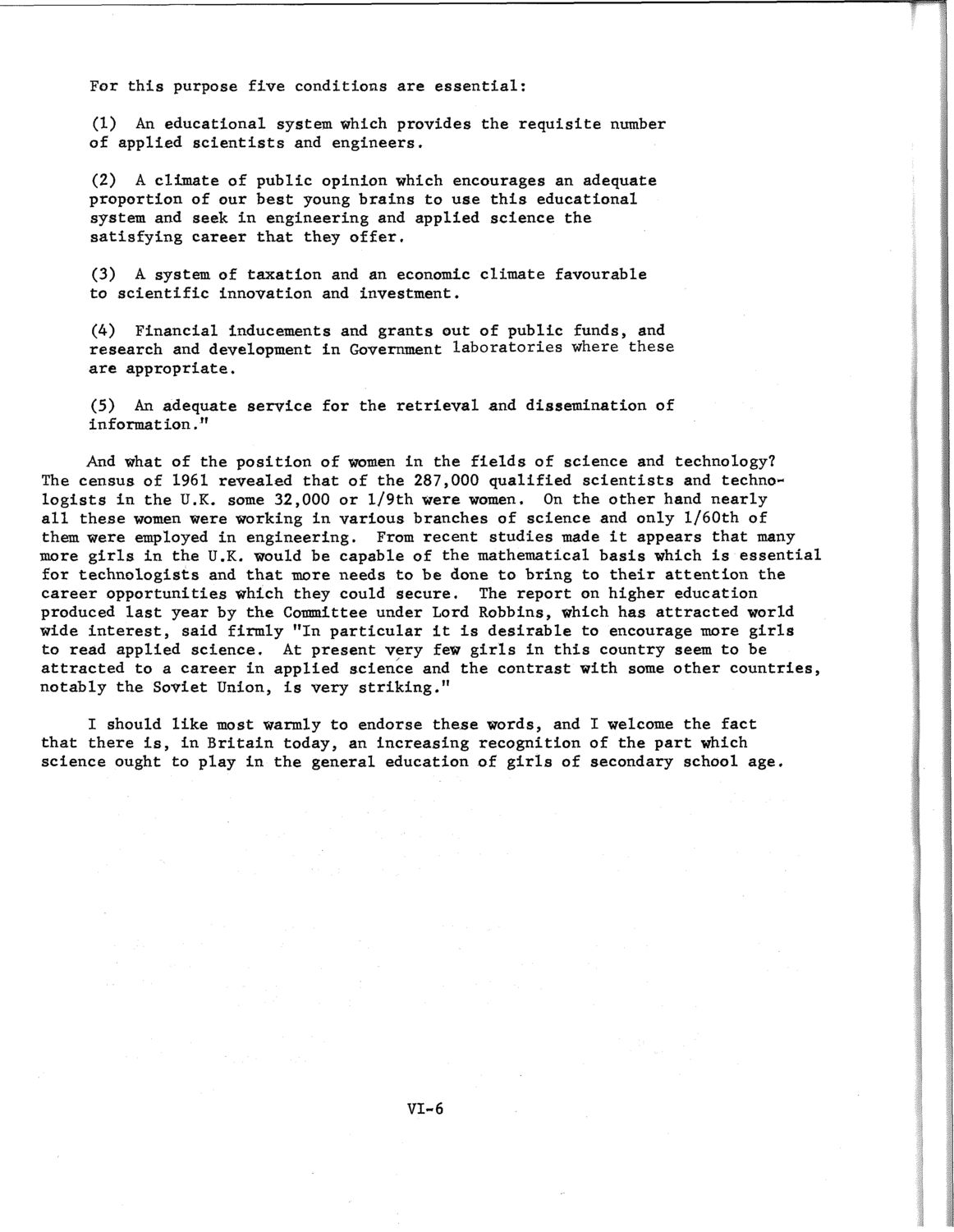| |
| |
Caption: SWE - Proceedings of the First International Conference of Women Engineers and Scientists
This is a reduced-resolution page image for fast online browsing.

EXTRACTED TEXT FROM PAGE:
For this purpose five conditions are essential: (1) An educational system which provides the requisite number of applied scientists and engineers. (2) A climate of public opinion which encourages an adequate proportion of our best young brains to use this educational system and seek in engineering and applied science the satisfying career that they offer. (3) A system of taxation and an economic climate favourable to scientific innovation and investment. (4) Financial inducements and grants out of public funds, and research and development in Government laboratories where these are appropriate. (5) An adequate service for the retrieval and dissemination of informat ion." And what of the position of women in the fields of science and technology? The census of 1961 revealed that of the 287,000 qualified scientists and technologists in the U.K. some 32,000 or l/9th were women. On the other hand nearly all these women were working in various branches of science and only l/60th of them were employed in engineering. From recent studies made it appears that many more girls in the U.K. would be capable of the mathematical basis which is essential for technologists and that more needs to be done to bring to their attention the career opportunities which they could secure. The report on higher education produced last year by the Committee under Lord Robbins, which has attracted world wide interest, said firmly "In particular it is desirable to encourage more girls to read applied science. At present very few girls in this country seem to be attracted to a career in applied science and the contrast with some other countries, notably the Soviet Union, is very striking." I should like most warmly to endorse these words, and I welcome the fact that there is, in Britain today, an increasing recognition of the part which science ought to play in the general education of girls of secondary school age. VI-6
| |